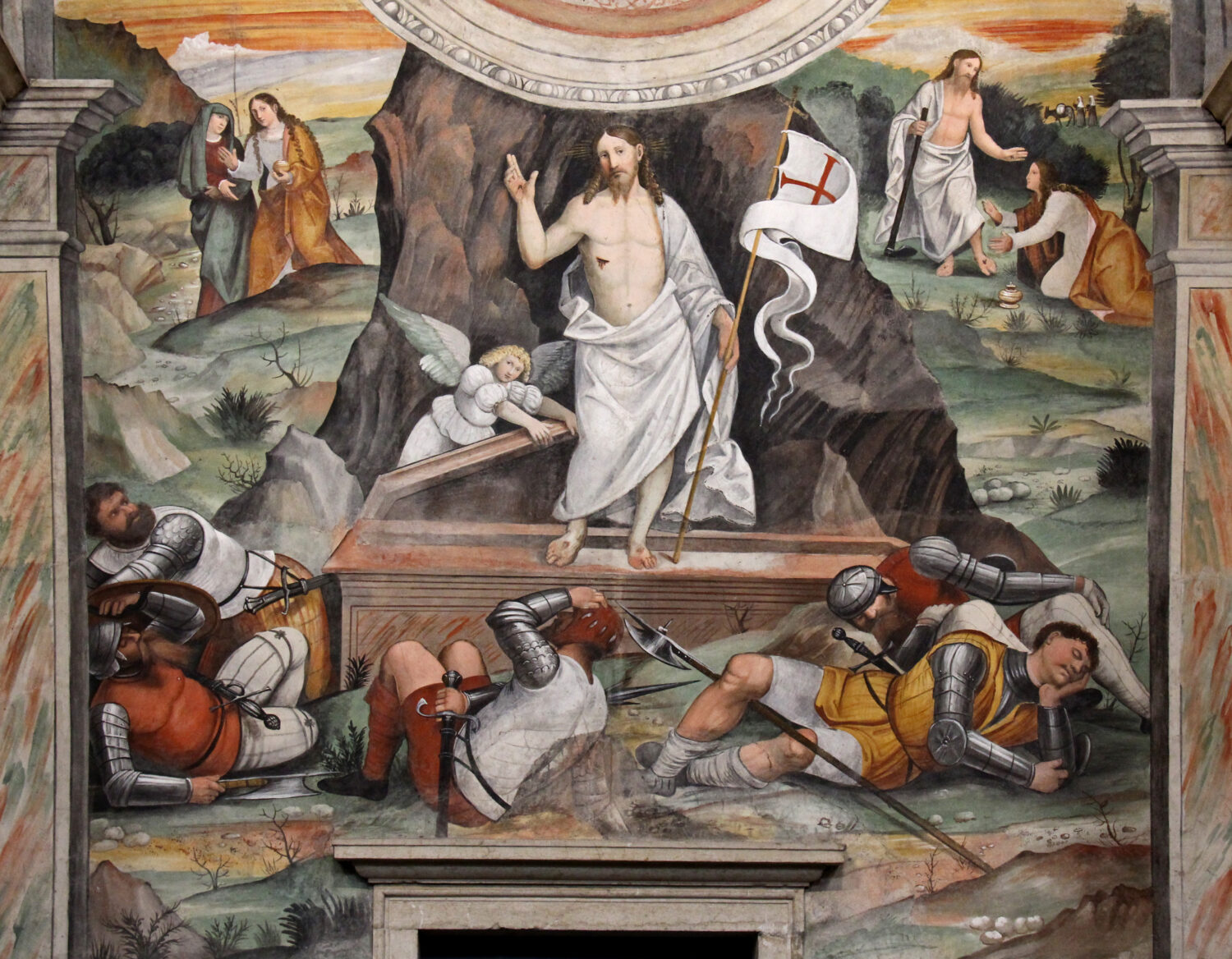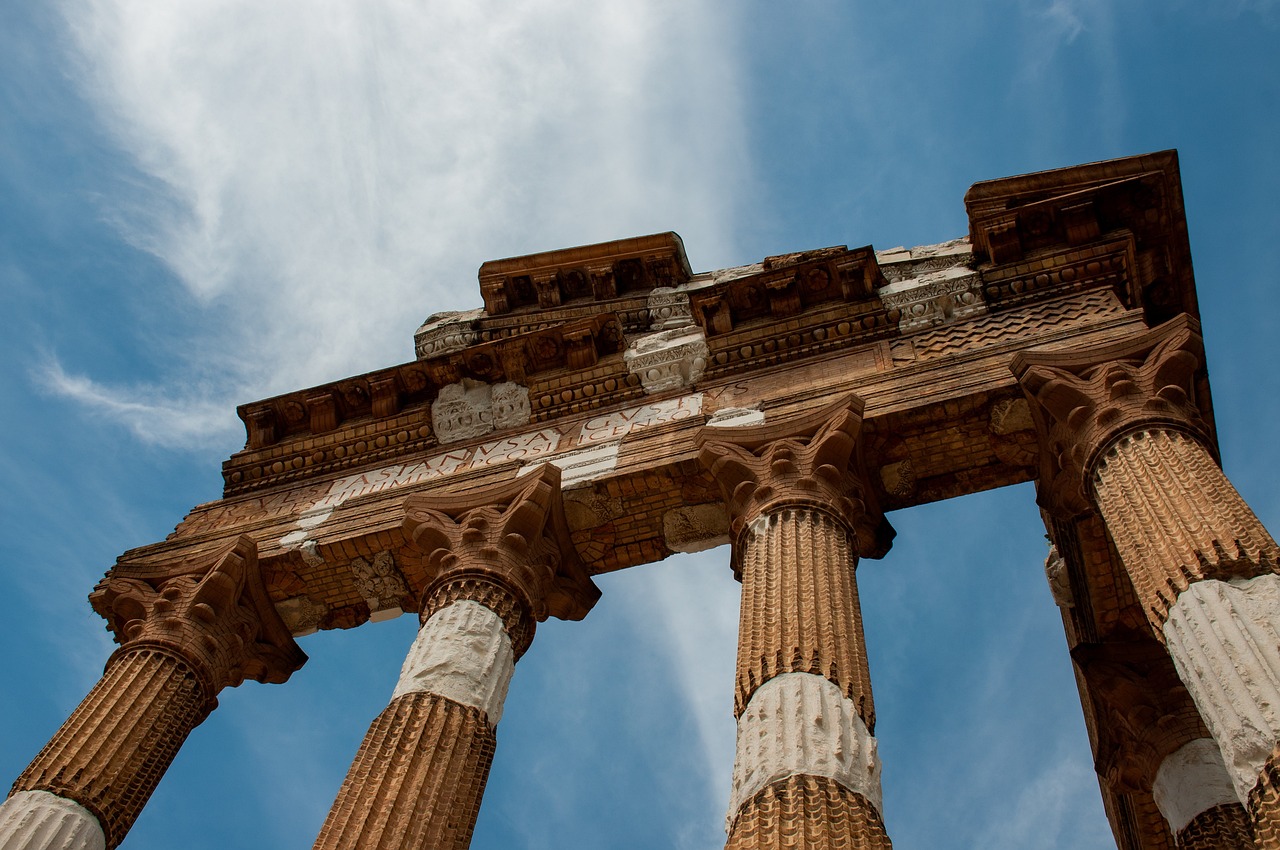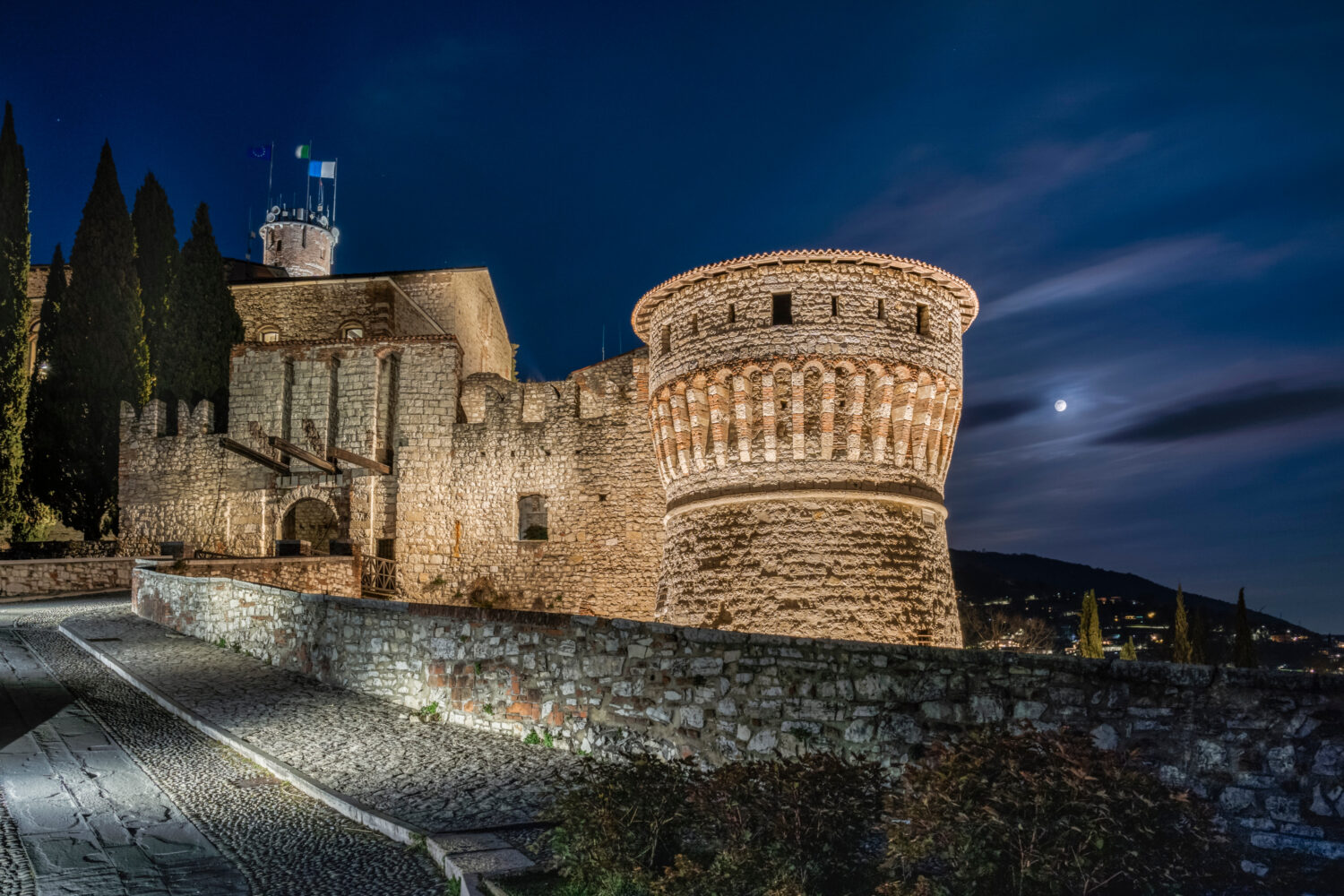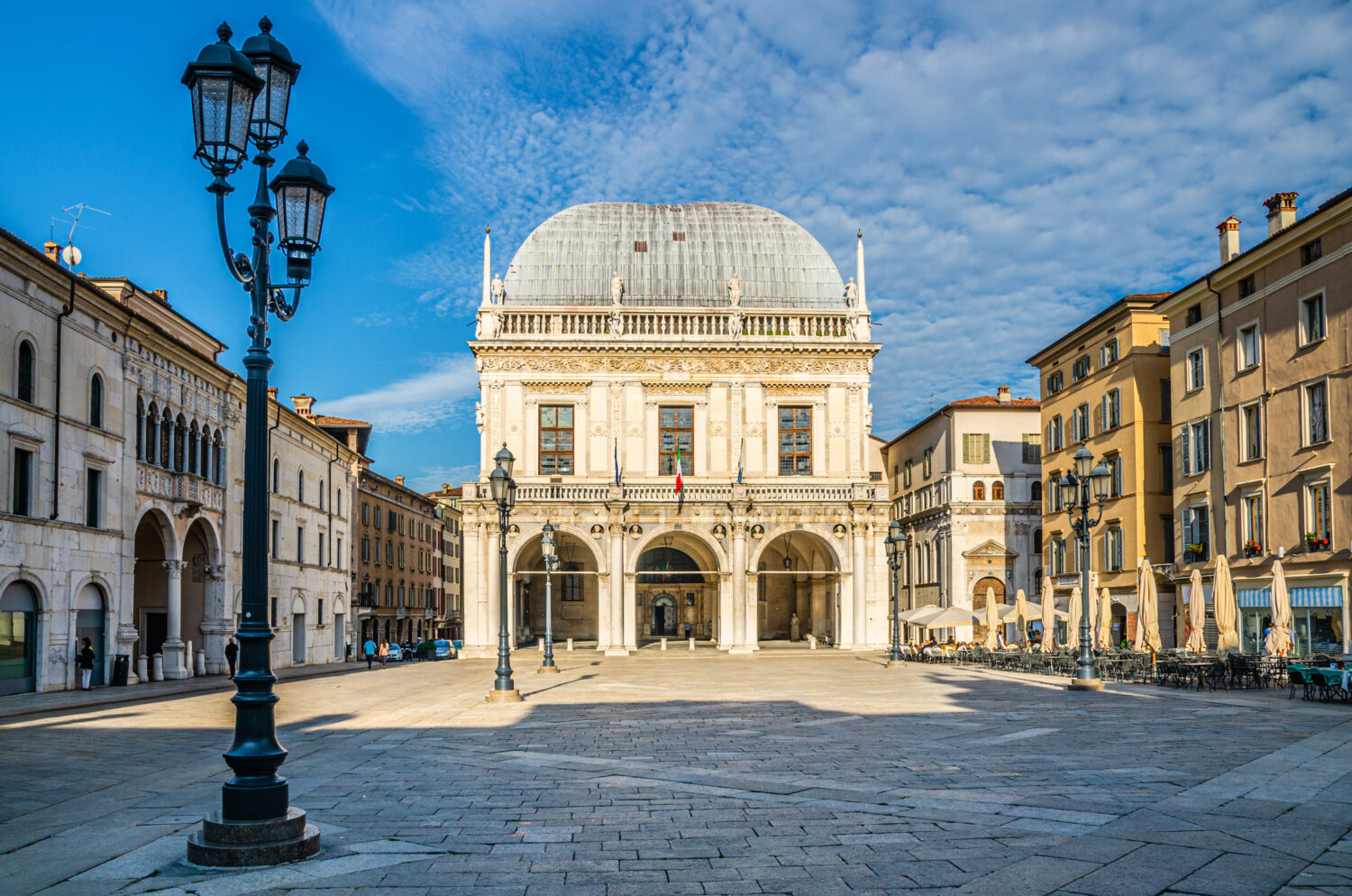Brescia is a large city in the Lombardy region of northern Italy. It’s situated in a breathtaking location near the Alps and also lakes Garda and Iseo. You may not know that Brescia has the best-preserved Roman buildings of any city in northern Italy, a medieval castle, and is one of seven UNESCO World Heritage Sites recognized for its Lombard architecture (Longobards in Italy, Places of Power). Art, culture, and amazing cuisine all await you so let’s find out what to see in one weekend in Brescia.
The Monastic Complex of San Salvatore-Santa Giulia
The Santa Giulia Museum (also known as the “City Museum”) is a UNESCO World Heritage Site and the most important attraction of the city. This former Benedictine monastery has been transformed into a museum housing a massive collection from prehistory to modern times.
Within the complex, you’ll find the Basilica of San Salvatore built in 753 AD by the will of future Lombard King Desiderius. It is Byzantine and High Middle Age architecture at its finest and one of the best examples from the time in all of Italy.
The Church of Santa Maria in Solaro is a 12th-century chapel located within the complex where you’ll find one of the finest jewels known in Europe, a 9th-century wooden cross covered with gold and silver and studded with over 200 precious gemstones, the Cross of Desiderius.
Another must-see within the complex is the Coro delle Monache or the Nuns’ Choir. Built between the 15th and 16th centuries, the Choir is located between the churches of San Salvatore and San Giulia. Magnificent frescoes adorn the walls and the Martinengo Mausoleum sculpture will leave you in awe.

Space within the museum has also been dedicated to the Roman house, known as the Domus, which was discovered under the monastery’s vegetable garden.
Brixia: Roman Brescia
The Archaeological Park of Roman Brescia, Brixia is in the immediate vicinity of the Santa Giulia Complex. Uncovered only in the early 19th century, this area includes the Capitolium Temple built in 73 AD under Vespasian. One of the most impressive pieces in the park is the bronze statue of a female warrior called “Winged Victory”. Previously displayed inside the Santa Giulia Museum, the almost 2,000-year-old statue is now located inside the Capitolium and is considered the symbol of Brescia. Also within the park are the Republican Sanctuary, a theater, and a Roman basilica.

You can purchase a single ticket valid for the entire Santa Giulia Complex and the archaeological park for just 15 euros. Visit the official website for more information. The easiest way to get here is to take the metro to the Vittoria stop.
The Castle: “The Falcon of Italy”
Brescia’s fantastic castle sits atop Cidneo hill and is the second-largest fortified castle in all of Europe. Built and improved upon over the course of about three hundred years (between the 13th and 16th centuries), this castle bore witness to ruling families from the Visconti to the Venetian Republic.
Within the castle, you’ll want to visit the Arms Museum, Roman artifacts, the first observatory open to the public in Italy, and an exhibit of model railroads. You can also tour the castle’s dungeons with an expert guide. The castle is also part of the Brescia Museums Foundation.

The Queriniana Library
Named after its founder, Cardinal Queriniana, the impressive library was opened in 1747. It holds 500,000 volumes including thousands of books from the 16th century. Due to being heavily bombed during World War II, it has been magnificently restored to its original state and is a bookworm’s dream. There is no cost to enter.
Piazza Paolo VI
Also commonly referred to as Piazza Duomo, this is Brescia’s most beloved square and is where the Broletto, Pégol Tower, and both the Old and New Cathedrals are located.
Yes, you read that correctly; there are in fact two duomos in Brescia in the same square. The “Duomo Vecchio” is an 11th-century Romanesque building known as rotunda for its distinct circular shape. On September 14th and the last Friday of March every year, you can view holy relics including wood fragments from Christ’s Holy Cross.
Although the “Duomo Nuovo” is considered “new” when compared to the 11th-century one, it is by no means modern. It was built in the early 1600s and its massive dome was completed in the 1800s.
Piazza Loggia
You may feel like you’re in Venice when you enter this piazza. Famous architects like Palladio and Vanvitelli contributed to the Loggia Palace (currently, Town Hall), one of Brescia’s most symbolic monuments. The piazza is one of the city’s cultural centers, especially in the summertime. Also in the square are the elegant loggia and the famous clocktower.

Piazza Vittoria
In stark contrast to its other squares, Piazza Vittoria is a prime example of architecture during Fascist Italy. It is also where some of Italy’s first skyscrapers were built. It’s the third-largest piazza in Brescia and a favorite among the locals.
Teatro Grande
Regardless of whether you decide to see a performance here, you must make a point to go inside Teatro Grande. This spectacular Neoclassical theater is five levels of splendid box seats, frescoes, gilding, and stuccoes: Rococo at its best.
Enjoy Brescia Like a Local
There is certainly enough on this itinerary to keep you busy touring Brescia for at least a week. Even if you only have a day or two, make sure to enjoy the true Brescia as the locals do by sipping on its signature aperitif, the Pirlo (or if you want the extra-large version, ask for a “Pirlone”). And do not leave the city without having its delicious stuffed pasta, i casoncelli, usually filled and topped with Grana Padano cheese, also original to Brescia. Pair it with Franciacorta Brut and you will be dining in true Bresciana fashion.
Tips
As already mentioned, Brescia is very well-connected by both the autostrada and railway as it is located between the major cities of Milan, Bergamo, and Verona. Once here, you can walk and use the convenient metro system.
Continue reading about other places to visit in the Brescia province like Sirmione and Limone sul Garda.

